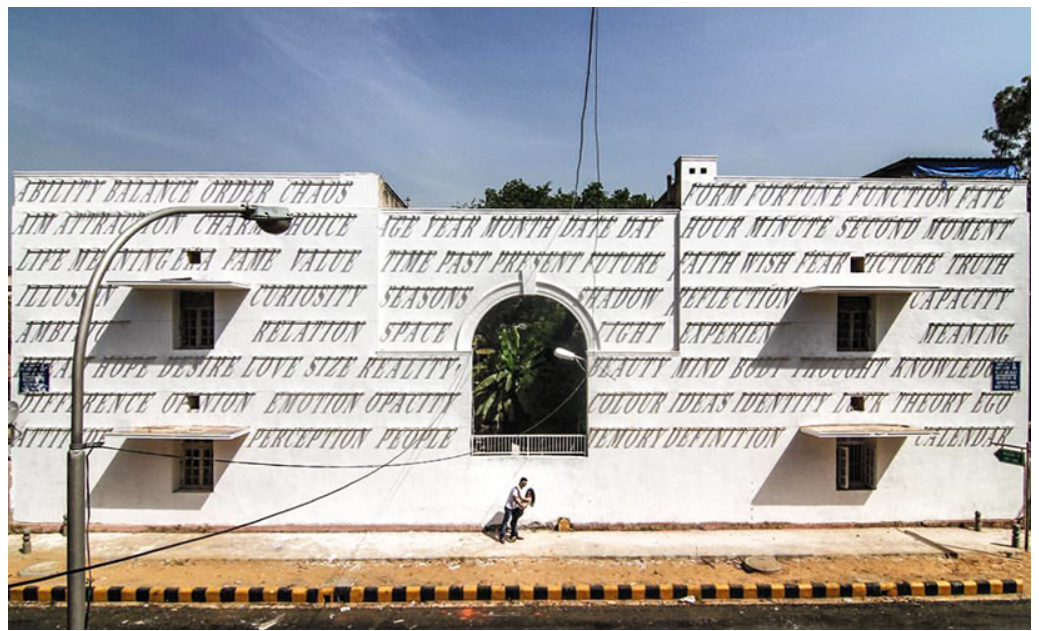Environmental art, also known as eco-art or ecological art, is a genre of art that emerged in response to growing environmental concerns and the need for sustainable living practices. It seeks to explore and address the complex relationship between humans and their natural surroundings. Artists in this genre often employ a diverse range of mediums, including sculpture, installation, land art, performance, and multimedia, to engage with environmental issues and advocate for change. By incorporating elements of ecology, activism, and community engagement into their work, environmental artists aim to provoke thought, raise awareness, and inspire action towards a more harmonious coexistence with the planet. Today, environmental art continues to evolve as a vital platform for addressing pressing environmental and social issues, reflecting the urgency of our times and the imperative for sustainable solutions.

In an era defined by pressing environmental concerns and social injustices, artists around the world are harnessing the power of creativity to raise awareness, provoke dialogue, and inspire action. Environmental art, a genre that encompasses a wide range of artistic practices focused on the natural world and human impact on it, serves as a potent tool for addressing pressing social issues. From pollution and climate change to biodiversity loss and environmental degradation, environmental artists confront these challenges head-on, creating impactful works that resonate with audiences and spark meaningful change.
One prominent example of environmental art addressing social issues is the work of Olafur Eliasson, an internationally renowned artist known for his immersive installations that explore themes of climate change and sustainability. Eliasson's ‘Ice Watch’ project, in which he transported massive blocks of ice from Greenland to London, served as a stark visual reminder of the urgent need to address melting polar ice caps and rising sea levels. By bringing the effects of climate change into the public sphere, Eliasson's artwork sparked conversations about environmental responsibility and collective action, galvanising communities to take steps towards a more sustainable future.

Closer to home, Twin City Project |Project Y: a Yamuna-Elbe Public Art and Outreach Project|, co-curated by Ravi Agarwal and Till Krause organised by ‘Germany and India 2011-2012: Infinite Opportunities’ Goethe-Institut/Max Mueller Bhavan, New Delhi GIZ & The City of Hamburg focused on the concept of establishing ecologically sustainable rivers within urban landscapes, the discussions surrounding the Elbe in Hamburg and the Yamuna in Delhi hold pivotal significance for the future of both cities. Amidst pressing water challenges, these discussions have intensified, drawing considerable public interest. Despite variations like dialogues between the two locales, the shared goal of addressing water issues underscores the importance of these conversations in shaping the environmental and social landscapes of Hamburg and Delhi.

In Delhi, the roster of participating artists includes Asim Waqif, Atul Bhalla, Gigi Scaria, and Sheba Chhachhi representing India, alongside Nana Petzet and Jochen Lempert from Germany, with additional contributions by Vivan Sundaram and Till Krause.
Meanwhile, in Hamburg, the lineup features artists such as Atul Bhalla, Navjot Altaf, Ravi Agarwal, Sheba Chhachhi, and Vivan Sundaram representing India, alongside Anna Möller, Jochen Lempert, Ines Lechleitner, and numerous other artists from Germany and various other countries.
In addition to raising awareness, environmental art has the power to catalyse tangible action and positive change in communities around the world. The ‘Trash People’ project by German artist HA Schult is a prime example of this transformative potential. Consisting of life-sized sculptures made from recycled materials collected from beaches, streets, and landfills, ‘Trash People’ serves as a powerful symbol of waste and consumerism.

The project has inspired clean-up efforts, recycling initiatives, and environmental education programs in cities worldwide, demonstrating how art can mobilise individuals and communities to address environmental challenges at the grassroots level.

Furthermore, environmental art can foster connections between communities and the natural world, promoting a deeper appreciation for biodiversity and ecological conservation. Ernesto Neto, a Brazilian artist, centred his artistic endeavours on placing human interaction at the forefront. Seeking to reintegrate spirituality into a materialistic society, Neto directed his focus towards crafting immersive environments that pulsate with life alongside their audience. His monumental installation, GaiaMotherTree, stood as a testament to collective effort, constructed entirely by hand over four years in Zurich's main train station.
Weaving together brightly coloured cotton strips, the 20-meter-tall structure transformed the public space into an artificial yet inviting sanctuary. Inspired by collaboration with the Uni Kuin indigenous peoples of Brazil, Neto fashioned a communal hub within the sculpture, fostering dialogue on human-nature relationships, sustainability, and cultural exchange.
In conclusion, environmental art serves as a powerful medium for addressing social issues, raising awareness, and inspiring action on a global scale. Through their innovative use of materials, techniques, and concepts, environmental artists provoke thought, evoke emotion, and challenge viewers to confront the interconnected challenges facing our planet and society. By harnessing the transformative potential of art, these artists are making a meaningful impact, catalyzing change, and shaping a more sustainable and equitable future for all.




Leave a Comment